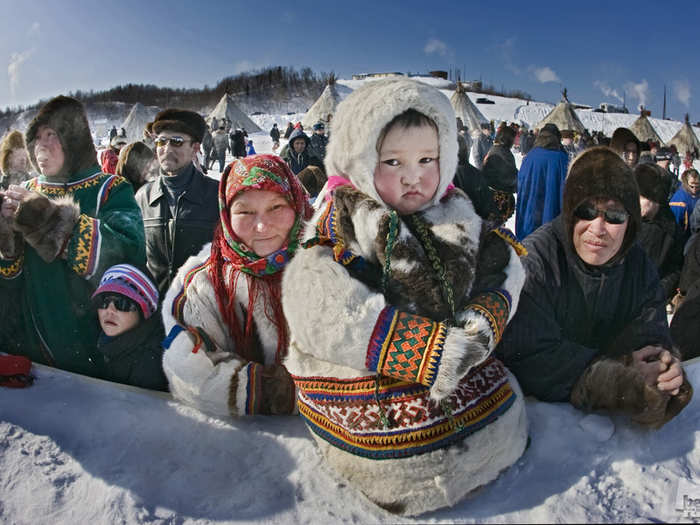The 10 Developed Countries With The Worst Quality Of Life
#10 South Korea

#9 Portugal

Average household disposable income: $19,366
There is a big gap between the richest and poorest people in Portugal: The top 20% of the population earn six times as much as the bottom 20%.
Only 32% of Portuguese adults aged 25-64 have earned the equivalent of a high school degree, and the voter turnout in recent elections was as low as 58%.
Researchers compared data from 34 countries that are members of the Organization for Economic Cooperation and Development. They based the rankings on 11 factors including income, safety, life satisfaction, and health, and then rated each country on a 10-point scale. Income is net-adjusted and in USD.
#8 Hungary

Average household disposable income: $13,858
58% of people aged 15 to 64 have a paid job in Hungary, even though 81% of adults have earned the equivalent of a high school degree.
Life expectancy at birth is 75 years (5 years lower than the OECD average), and 69% of Hungarians say they have more positive experiences in an average day than negative ones.
Researchers compared data from 34 countries that are members of the Organization for Economic Cooperation and Development. They based the rankings on 11 factors including income, safety, life satisfaction, and health, and then rated each country on a 10-point scale. Income is net-adjusted and in USD.
#7 Greece

Average household disposable income: $20,440
In Greece, 65% of adults aged 25-64 have earned the equivalent of a high-school degree, and the average student scored 473 on the OECD Programme for International Student Assessment test (far below the average of 497).
Though their life expectancy is above the OECD average, they have a high level of atmospheric PM10 at 31 micrograms per cubic meter.
Researchers compared data from 34 countries that are members of the Organization for Economic Cooperation and Development. They based the rankings on 11 factors including income, safety, life satisfaction, and health, and then rated each country on a 10-point scale. Income is net-adjusted and in USD.
#6 Estonia

Average household disposable income: $12,800
Estonia has made progress over the last decade improving quality of life for their citizens, by bolstering its education system.
Their voter turnout, however, still remains below the OECD average at 64%, and only 69% of the population say they have more positive experiences in an average day than negative ones.
They also have one of the lowest average household disposable incomes on the list.
Researchers compared data from 34 countries that are members of the Organization for Economic Cooperation and Development. They based the rankings on 11 factors including income, safety, life satisfaction, and health, and then rated each country on a 10-point scale. Income is net-adjusted and in USD.
#5 Russia

Average household disposable income: $15,286
The average life expectancy at birth in Russia is 70 years, well below the OECD average of 80.
The voter turnout is Russia in recent years was 65%, below the OECD average of 72%.
Researchers compared data from 34 countries that are members of the Organization for Economic Cooperation and Development. They based the rankings on 11 factors including income, safety, life satisfaction, and health, and then rated each country on a 10-point scale. Income is net-adjusted and in USD.
#4 Brazil

Average household disposable income: $23,047
Despite reportedly high levels of overall satisfaction with their lives, Brazilians do not perform well on the OECD scale.
68% of people aged 15 to 64 have a paid job in Brazil, with 12% of employees working extremely long hours.
And only 41% of Brazilians have earned the equivalent of a high school degree.
Researchers compared data from 34 countries that are members of the Organization for Economic Cooperation and Development. They based the rankings on 11 factors including income, safety, life satisfaction, and health, and then rated each country on a 10-point scale. Income is net-adjusted and in USD.
#3 Chile

Average household disposable income: $11,039
Chile has the lowest average household disposable income at only $11,000 annually. There's a huge gap between the richest and poorest, with the top 20% earning 13 times as much as the bottom 20%.
Chileans also have extremely high level of atmospheric PM10 (which causes lung damage) at 53 micrograms per cubic meter — over 30 micrograms higher than the OECD average.
Researchers compared data from 34 countries that are members of the Organization for Economic Cooperation and Development. They based the rankings on 11 factors including income, safety, life satisfaction, and health, and then rated each country on a 10-point scale. Income is net-adjusted and in USD.
#2 Mexico

Average household disposable income: $12,732
Despite tremendous progress over the last decade, Mexico is still one of the worst developed countries on the OECD list.
Only 60% of people aged 15 to 64 have a paid job, and those that do work approximately 2,250 hours a year, much higher than the OECD average of 1,776.
And despite improvements in education, still only 36% of Mexicans have earned the equivalent of a high school degree.
Researchers compared data from 34 countries that are members of the Organization for Economic Cooperation and Development. They based the rankings on 11 factors including income, safety, life satisfaction, and health, and then rated each country on a 10-point scale. Income is net-adjusted and in USD.
#1 Turkey

Average household disposable income: $23,047
For the second year in the row, Turkey is at the bottom of the OECD list by a long shot.
31% of its population has the equivalent of a high school degree, and 48% of people have a paid job — some of the worst numbers on the list.
Plus, only 68% of Turkey citizens say they have more positive experience in an average day than negative ones.
Researchers compared data from 34 countries that are members of the Organization for Economic Cooperation and Development. They based the rankings on 11 factors including income, safety, life satisfaction, and health, and then rated each country on a 10-point scale. Income is net-adjusted and in USD.
Popular Right Now
Advertisement
